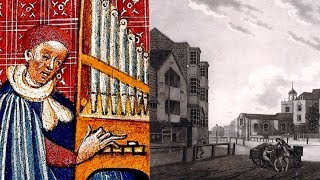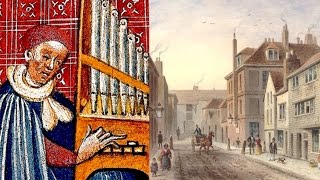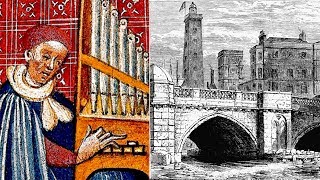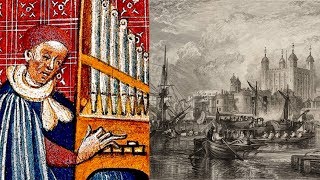Saturday, 03 January, 2026г.
















Где искать: по сайтам Запорожской области, статьи, видео ролики
пример: покупка автомобиля в Запорожье
Starling Goodwin (1711 - 1774): Windsor (Hymn Arrangement)
http://Rousseau.SHP.media Blind musician Starling Goodwin (1711 - 1774) was one of London's leading organists in the mid-Georgian period. As a composer, he wrote a number of pieces for organ or harpsichord, but as organist of at least three churches he was also accompanying the congregation in the singing of hymns and we are fortunate that his son published examples of these after his death.
Hymn singing in Georgian England was always in danger of being a turgid affair. Congregations knew only a small handful of basic metre tunes which were used again and again as settings for the different psalms in the mostly poor metrical translations used for singing. Many churches had no organ, and those that did had mostly small instruments with a limited range of sound colour.
A good organist then, as now, could greatly enliven the experience of hymn singing with imaginative and lively playing. In the Georgian period, this consisted of the more adventurous and capable performers, such as Starling Goodwin, providing elaborate "givings-out" (introductions), interludes, and harmonies to the basic tunes.
In all probability, many of these would have been improvised and varied from service to service, but we know exactly how Starling Goodwin performed them because his son, William Goodwin, also an organist and composer, published some of his father's written arrangements in a volume called "The Complete Organists Pocket Companion Containing a Choice Collection of Psalm-Tunes with their Givings-Out, and Interludes, as used in Parish Churches by the late Mr. Starling Goodwin".
Unable to read or write, his music may been composed and performed 'by ear' and some of it written down by William for his own use and inspiration.
The arrangement of the tune "Windsor" given here is typical of Starling Goodwin's style and method of accompanying hymns and psalms, as set out in the book. Although he wrote some himself, most of the tunes were already long-established staples and widely known. But the "givings-out" and the interludes are his own. (For an example of one of his own hymn tunes visit Rousseau Media Music's YouTube video of Starling Goodwin's "Newington".)
First there is an elaborate, free-style "giving-out". Georgian congregations didn't need reminding of the tune so this could be as free and elaborate as the organist felt suited the occasion. The one here is almost like a cadenza with its frilly trills and runs.
The arrangement of the main tune itself would have been Starling Goodwin's own harmonies. Again, this is slightly more elaborate than the usual, plodding four-square arrangement.
Longer psalms needed interludes to break up the verses and give the congregation a break. Starling Goodwin provides three interludes to go with "Windsor". These could be repeated if required for hymns needing more than three such breaks. As performed here, the arrangement is the three interludes between four verses.
This is exactly the kind of hymn accompaniment that Starling Goodwin would have used at a big parish church such at St Saviour's, Southwark. He became organist in 1750 following the death of Bartholomew Isaack who had held the post since 1705. The organ Starling inherited had been built by Abraham Jordan the elder in 1705. But in 1764, a major overhaul was carried out by John Byfield and the instrument Starling then had consisted of 25 stops (sounds) divided between three manuals (keyboards). So he had plenty of tone colour at his disposal.
It is worth pointing out that in performing "Windsor" Starling Goodwin used a trilling note as a fill between each line of the verse. This sounds bizarre to modern ears, and rather like what an organist refers to as a "cipher", describing a note that sticks and refuses to switch off.
Теги:
Starling Goodwin (composer) 18th Century (Event) Organist (Profession) Composer (Profession) Hymn (Composition Type) Hymn Tune (Composition Type) London (City/Town/Village) England (Country) Southwark (City/Town/Village) Organ (Musical Instrument) Abraham Jordan (organ builder) John Byfield (organ builder)
Похожие видео
Мой аккаунт


 У вашего броузера проблема в совместимости с HTML5
У вашего броузера проблема в совместимости с HTML5


